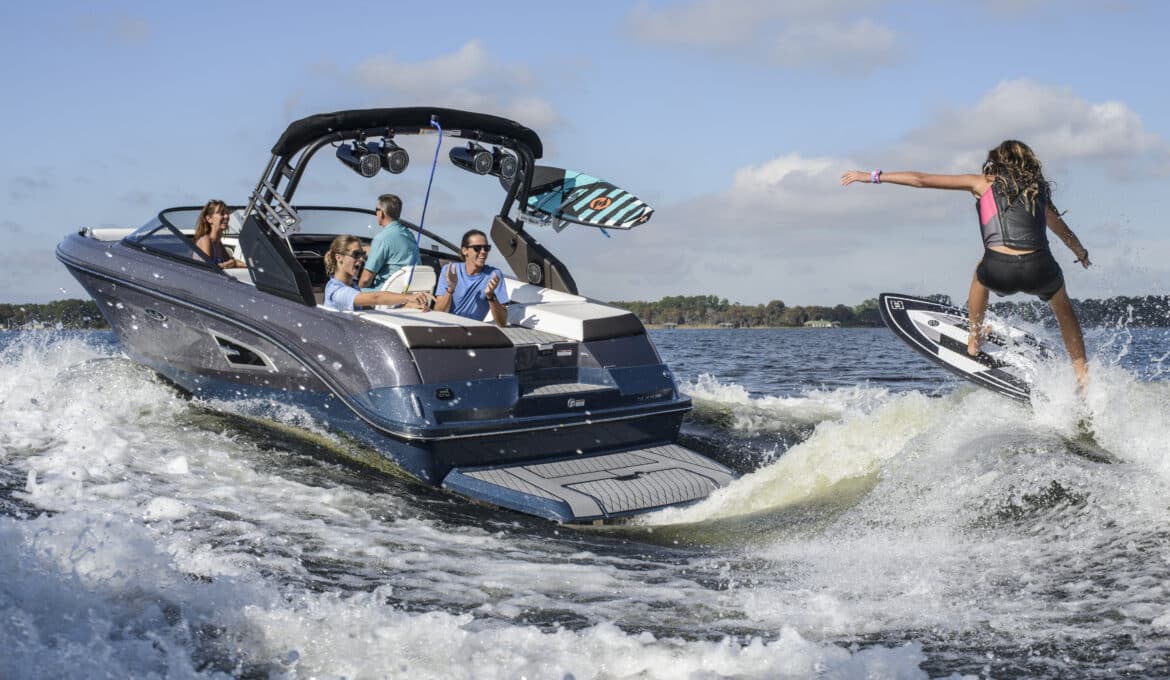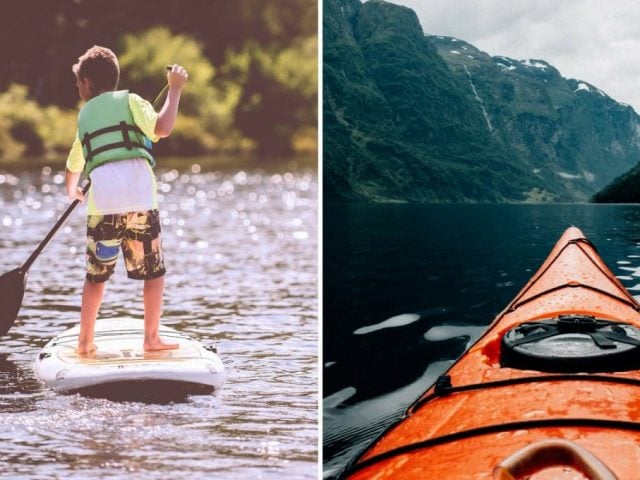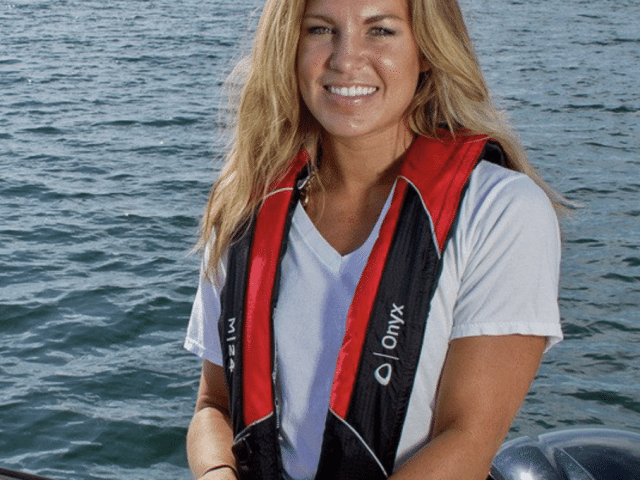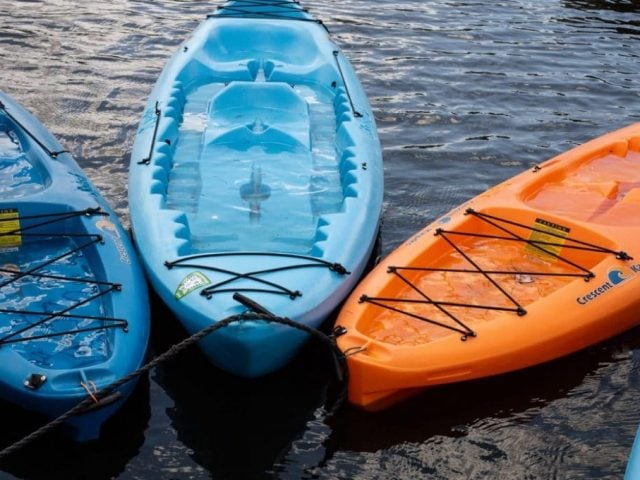Wakesurfing is quickly emerging as one of the most popular water sports activities. To wakesurf, you ride the wake on a board behind a boat, without being physically attached to the board or boat. It’s easier than regular surfing and just as much fun. It’s also safer than some other water sports activities since you travel at slower speeds. The slower speeds mean less wear and tear on your body. All age groups are welcome so it’s a great activity for the whole family.
Wakesurfing vs. Wakeboarding
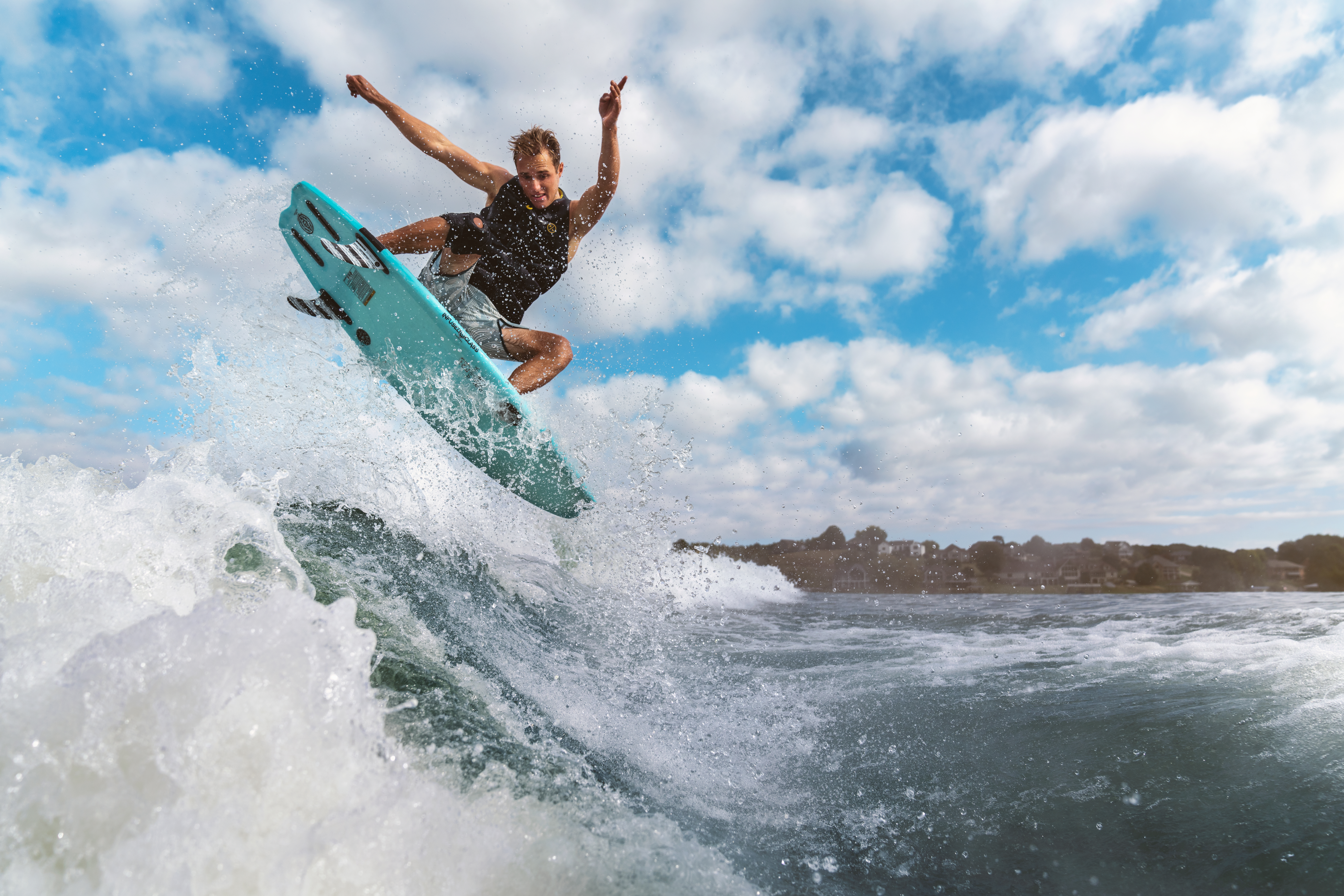
Wakesurfing is an adaptation of wakeboarding and surfing. Although similar to wakeboarding, there are some very key differences. Notably, you aren’t physically attached to a wakesurf board like you are a wakeboard so there are no bindings. Wakesurf boards are also different shapes and size. The rope is shorter for wakesurfing, and you let go of it when you get on a wake. Alternatively, wakeboarding requires you to hold onto the rope at all times for momentum. Lastly, you’ll be traveling at slower speeds when wakesurfing, typically between 10-15 mph compared to 15-25 mph for wakeboarding.
Boat Selection
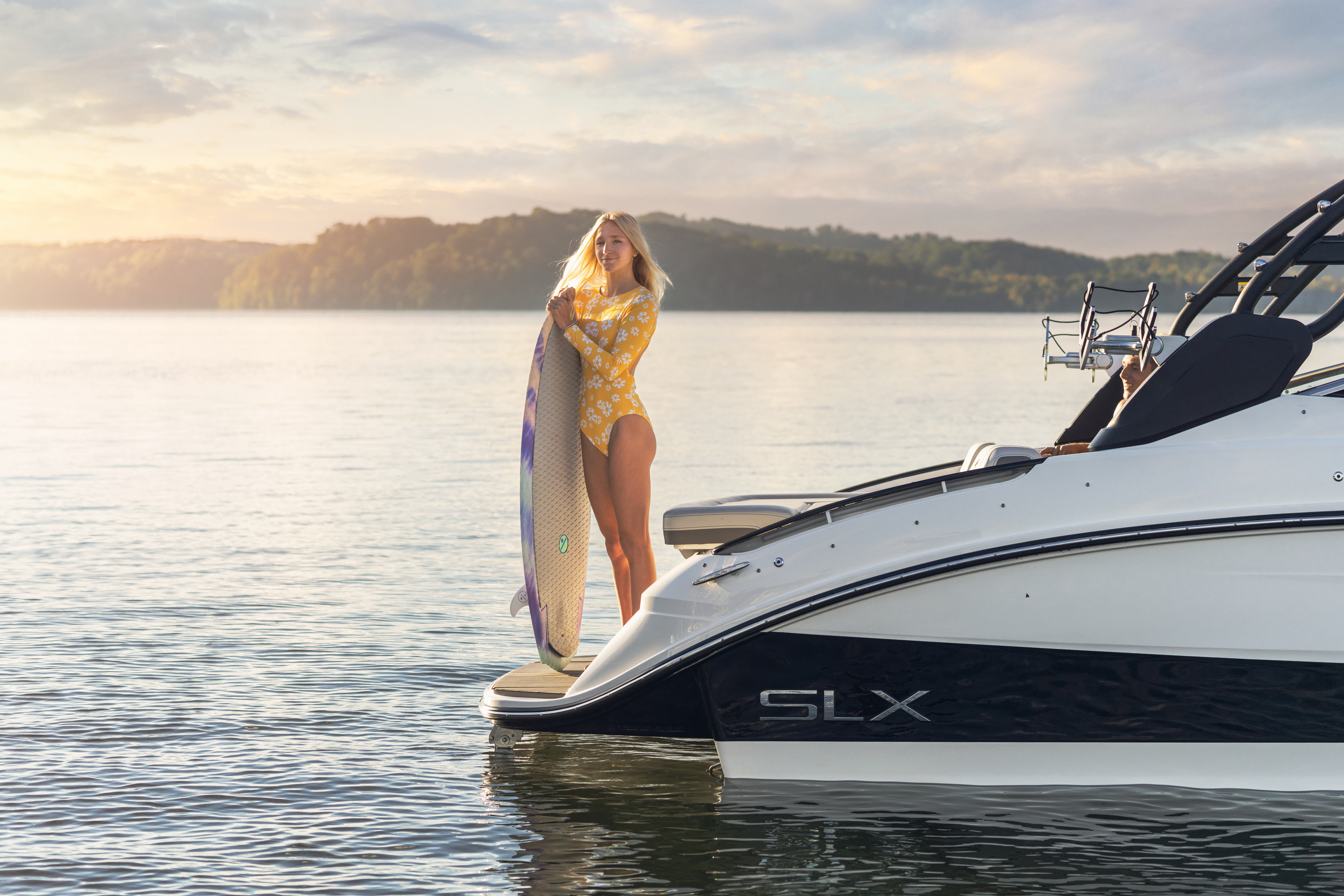
Not every boat is equipped to handle wakesurfing. Unlike other water sports activities like tubing, water skiing, and wakeboarding, wakesurfing boats cannot have an outboard motor, unless they have a reverse drive (propeller shaft pointed toward the bow). The reason for this is that with wakesurfing, you’ll be riding much closer to the boat, at times you could be only 3′-10′ away. If you were to fall forward into the stern, the spinning propeller on the motor could spell disaster. Therefore, you’ll need to have an inboard motor with either a direct drive, v-drive, or inboard jet.
In addition to the type of engine, hull construction is also a crucial aspect of boat selection as it directly affects the type of wake the boat produces. A flat bottom hull for example doesn’t displace much water so it would not produce a large wake. For wakesurfing, you want either a “Modified V” or “Deep V” hull since they displace a lot of water and produce large wakes. In addition to hull shape, having a good internal ballast is fundamental to your surf, and adjusting it properly leads to the best fuel efficiency so you can spend more time out on the water. If you still can’t get a good wake behind your boat, you can try wakeshapers that suction to the exterior of the boat on the port or starboard side and help change the signature of the wake.
Wakesurfing Gear
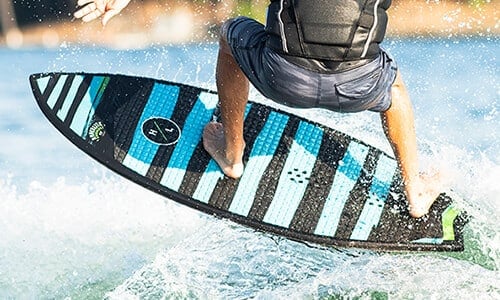
Before hitting the water, you’ll need a few wakesurfing accessories. It’s important to note that although a lot of your watersports gear may look similar, it is not interchangeable. You cannot use a wakeboarding rope for wakesurfing, nor can you use one for tubing or water skiing.
PFDs
First and foremost, you’ll need an appropriate life vest. It’s important that the vest fits you well, so it does not become loose or dislodge when you fall. A United States Coast Guard (USCG) approved Type III vest provides you with protection as well as excellent mobility for wakesurfing.
Overton’s Pick for Men’s Adult Vest (USCG Type III): Overton’s Men’s BioLite Life Jacket With Flex-Fit V-Back
Overton’s Pick for Women’s Adult Vest (USCG Type III): Overton’s Women’s BioLite Life Jacket With Flex-Fit V-Back
Overton’s Pick for 75-125 lb. Junior Vest (USCG Type III) – Overton’s Junior BioLite Life Jacket
Wakesurf Boards
There are three main types of wakesurf boards – surf shape, skim shape, and hybrid shape. In choosing the correct board, it’s important to find one that not only suits you well physically, but also matches your skill level. A skim shape board is designed for intermediate to advanced surfers and is better for doing spins and tricks. If you’re just beginning wakesurfing, this board is going to be very challenging and will likely discourage you from the sport altogether. A surf shape board is better for beginners since it’s very stable and buoyant. As you learn to wakesurf, you can move up to a hybrid board that’s designed for developing more skills.

Surf Shape – Although best for beginners, this board can still be enjoyed by intermediate and advanced riders. The surf shape board is thicker than the skim shape and mirrors the traditional surfboard shape and size. It also has longer fins that help with stability and tracking.
Overton’s Pick: Jobe Pace Wakesurfer
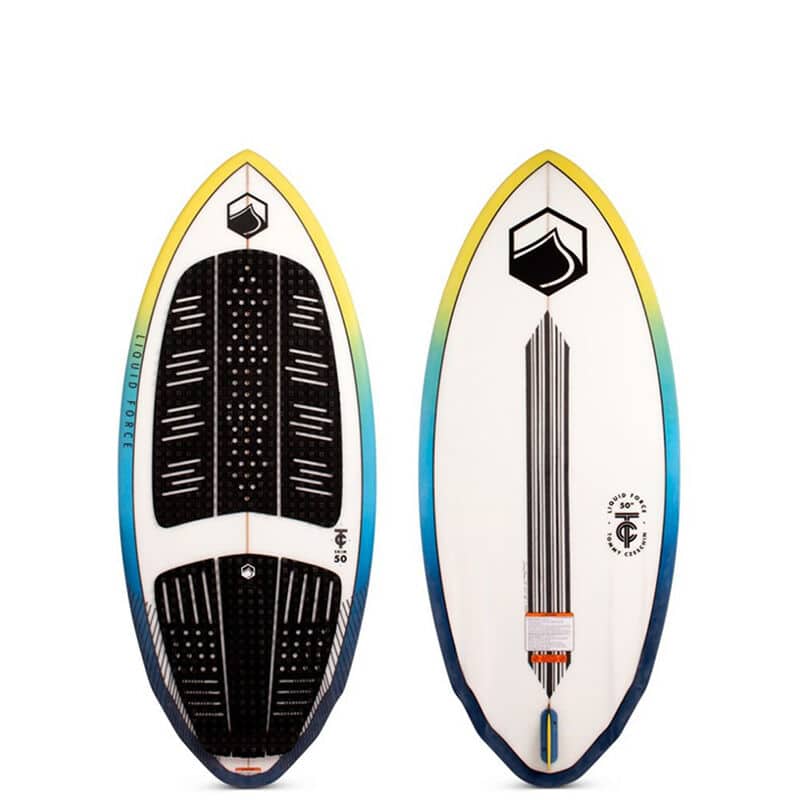
Skim Shape – The skim shape board is designed for intermediate and advanced riders. This board is thinner than the surf shape which means it’s less buoyant and allows for quicker reactions.
Overton’s Pick: Liquid Force TC Skim Wakesurfer
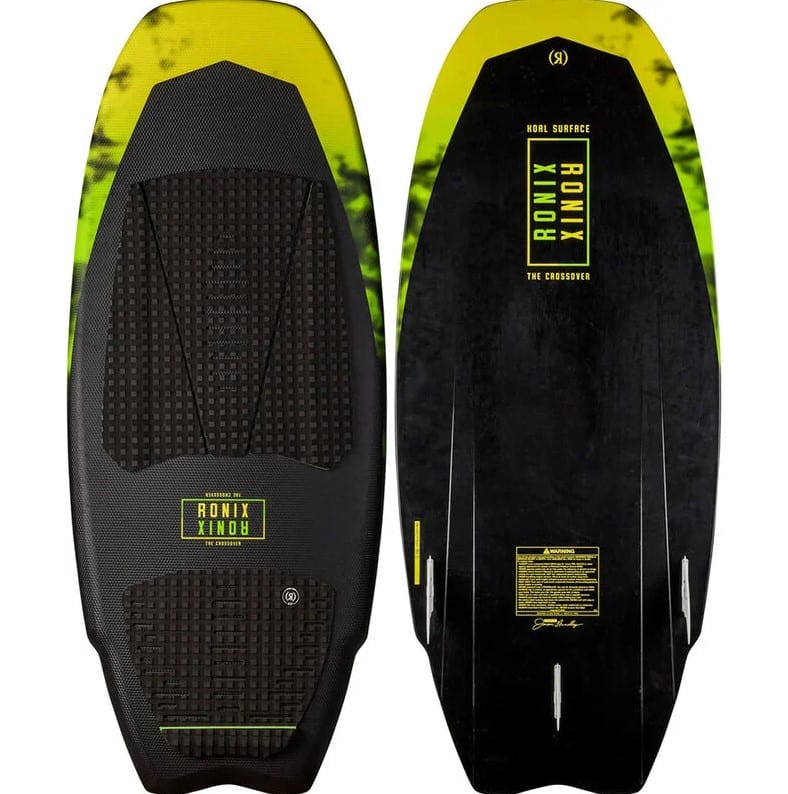
Hybrid Shape – The hybrid shape is a mix between the surf shape and skim shape. It’s thick like a surf shape board, but it has a tip and tail with the same outline as a skim shape. The hybrid shape board allows you to spin like you would on a skim board or cruise like you would on a surf shape.
Overton’s Pick: Ronix Koal Surface Crossover Wakesurfer
Size Chart
In addition to style, determine the length of wakesurfer you need based on the rider’s weight as seen in the chart below.
Rider Weight Surf Style Skim Style Hybrid Style
Up to 110 lbs. Up to 4′ Up to 4′ Up to 4′
100 – 170 lbs. 4′ – 4’8″ 4′ – 4’4″ 3’9″ – 4’8″
150 – 200 lbs. 4’8″ – 5′ 4’4″ – 4’10” 4’8″ – 5’3″
190 – 250+ lbs. 5’+ 4’10″+ 5’+
How to Wakesurf
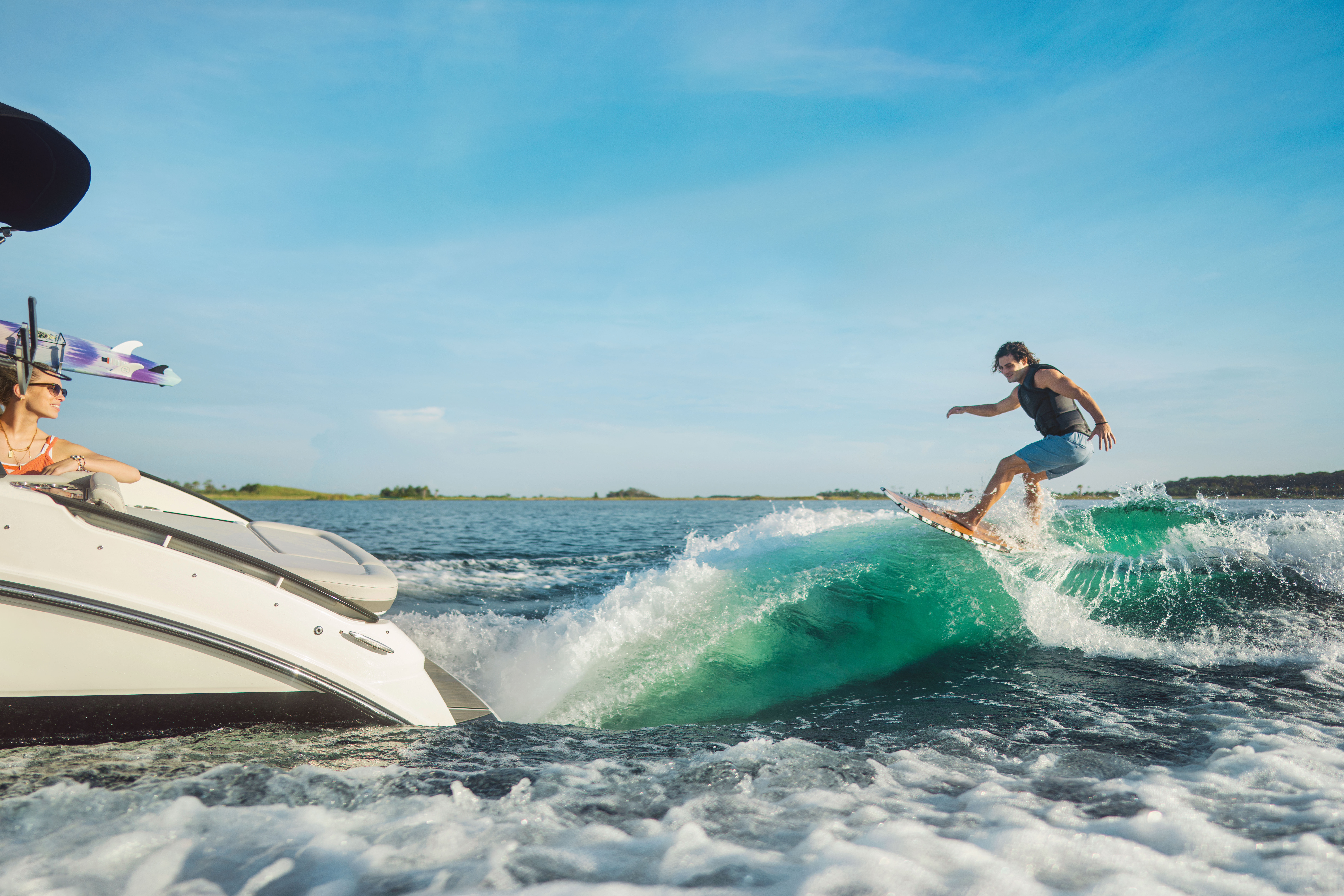
Now that you’ve determine your boat and gear selection, it’s time to get out on the water. First, you’ll need to decide if you want your left foot forward (regular) or right foot forward (goofy). If you have ever ridden a skateboard before, it’s the same principle. If you’re not sure, hop on the board both ways and see which feels better. Most people ride regular, but that doesn’t make goofy wrong, it’s all about how it feels to you. The front foot will be positioned in the middle of the board, and the back foot will be near the tail. Your feet should be about 18” apart.
To start, lie back in the water with your feet loosely on the board. Signal for the driver to accelerate; 10 mph is usually good to start, but you can increase as needed. Hold onto the rope, dig your feet into the board, and allow the boat to pull you upright. Point the forward end of the board in the direction you wish to surf. That’s it!
If the wakes are too steep, add more ballast to the bow of the boat. If the wakes don’t have enough push, add more ballast to the stern. If you need to turn, apply pressure to your heel and big toe. If you need to speed up, put more weight on your front foot, or if you need to slow down, put more weight on your rear foot. Don’t expect to get this right your first time out. It takes practice to perfect these methods. There’s only so much to gain from reading about it. It’s time for you to get out on the water and give it a go for yourself.
If you have any tips for first-time riders, make sure to share them below!

